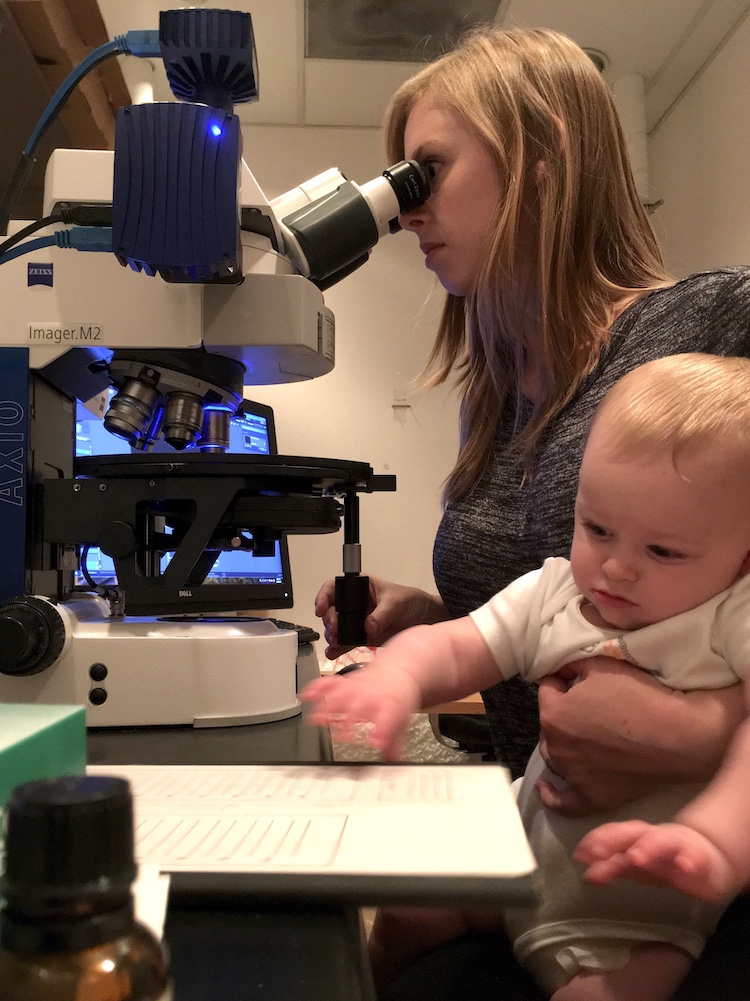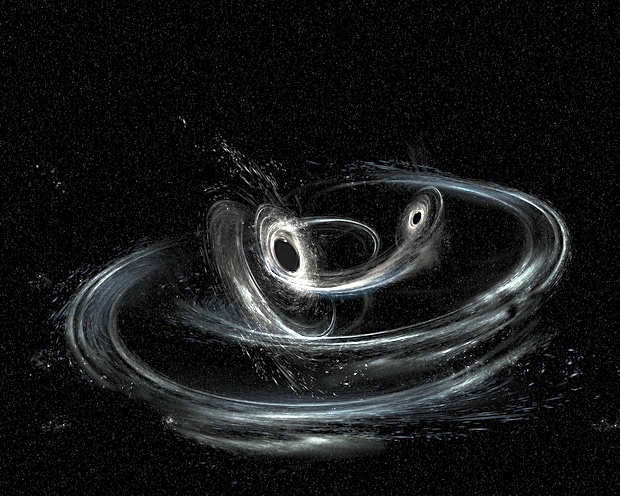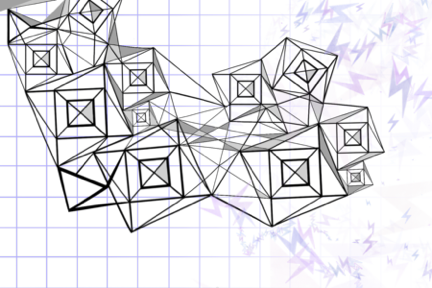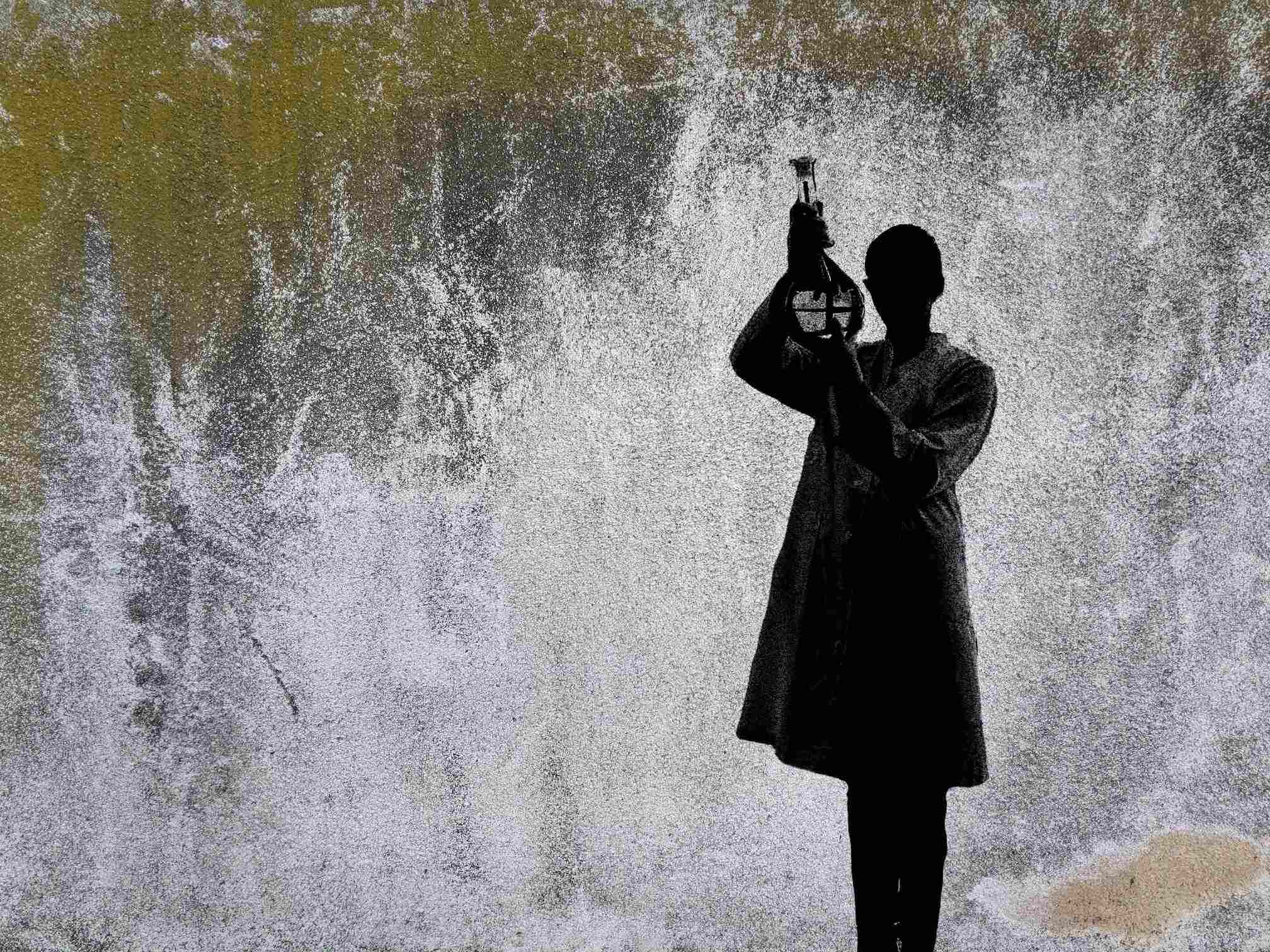We’re celebrating our first full academic year of sharing amazing science!
In the past year and a half, Caltech Letters has published 29 stories from the Caltech community, with topics ranging from the microscopic to the interstellar.
Although all of our publications are worthy of their own praise, we’ve rounded up some of our favorites (in no particular order) to give you a taste of what Caltech Letters has to offer.
In the past year and a half our community has:
Given Voice to Graduate Student Parents

Riley and her baby, busy at the microscope.
Riley Galton
In the first “Viewpoints” article published by Caltech Letters, Biology PhD student Riley Galton sheds light on the unique plight of graduate students who are also parents. “Graduate school is challenging,” she writes, “and parenthood is also challenging… But what about students who do both?”
This article poses important questions about how academia treats parenthood and how this translates into the institutional policy on such issues as housing, child care, and paid maternity and paternity leave. These challenges are not unique to Caltech but are common across all academic institutions.
The response to this article was so great, that Riley was asked to write a companion piece in Science Magazine! Go Riley!
Used Robots to Untangle the Ocean’s Currents

Caltech alum and Caltech Letters editor Giuliana Viglione aboard a research vessel in Antarctica.
Giuliana Viglione
Former graduate student and Caltech Letters editor Giuliana Viglione spent months aboard research vessels in the Antarctic Ocean from 2018 to 2019. Her research team uses robotic ocean gliders to collect deep sea data about our world’s most frigid waters.
The Southern Ocean is a unique mixture of the world’s large bodies of water, and scientists can learn a lot about human impact on the Earth’s climate by tracking the ocean currents around Antarctica. The research is not without its challenges though, least of which is months spent without fresh vegetables and 24-hour sunlight.
This piece was later published in Caltech Magazine. Giuliana has since graduated and is continuing her career as a science communicator as an Editorial Fellow at Chemical & Engineering News.
Found Parallels Between Science and Art

Alison Koontz (oh wait that’s me!) published a 3-part series for Caltech Letters looking into the pinnacle discoveries that helped humans untangle the mystery of colors, and how both the arts and sciences were integral in making these discoveries. Beginning with “A Brief History of Color,” the series continues on to delve into experiments done in both the arts and sciences on color perception, and later deals with how colors are made by both nature and by humans.
Unraveled the Mind of Albert Einstein

Albert Einstein spent three winters as a visiting professor at Caltech. However, his legacy extends far beyond a particular institution. He is heralded as one of the most brilliant people ever to live, but historians are just beginning to unearth the extent of his genius.
The Einstein Papers Project has had its home at Caltech since 1987, and is one of the most ambitious scholarly investigations the school has ever undergone. Sociologists and historians spend their time digging through over 90,000 of Einstein’s records, using everything from his handwritten letters to his scribbled, nonsensical equations to create a clear picture of the man Albert Einstein.
Surprisingly to most people, Einstein was not only a brilliant scientist, but a vocal political activist. Many of his personal records paint Einstein as an active advocate for social justice, anti-racism, anti-Semitism, and anti-capitalism. However, in this article, historian Melissa Buttner examines these views in the context of Einstein’s science, his work on the nuclear bomb and the vast military applications of his work. The piece evokes questions that are still unsolved for scientists today. Can scientists be social activists? Can scientists really be apolitical? What responsibility do scientists have in how their discoveries are used?
The Einstein Paper Projects has also been shining a light on some of Einstein’s racist views, expressed earlier in his life and, serving as a reminder that even our heroes can be flawed.
This piece is both a beautiful look into the mind of a famous genius, and a haunting reminder of the problems that still face academics today.
Tested General Relativity Using Black Holes

Artist’s rendition of two merging black holes similar to those detected by LIGO
Modified from LIGO/Caltech/MIT/Sonoma State (Aurore Simonnet)
On September 14, 2015 gravitational waves were detected for the very first time by the twin LIGO (Laser Interferometer Gravitational-Wave Observatory) detectors. This finding, which later secured Caltech’s own Kip Thorne and Barry Barish, along with MIT’s Rai Weiss a Nobel Prize in 2017, sparked the beginnings of the field of gravitational wave astronomy.
One of the major uses of gravitational wave detection is the capacity to test Einstein’s general theory of relativity, a theory that is revolutionary but still notably incomplete. By measuring the gravitational waves created by colliding black holes and the waves of the resulting merged black hole, physicists like Vijay can directly test Einstein’s theory.
Here’s To a New Year! At Caltech Letters we want to showcase the amazing variety of the work being done by Caltech scientists, and take people behind the curtain to see how these scientists work. We’re looking forward to the next year of helping Caltech scientists share their amazing stories with the world.




